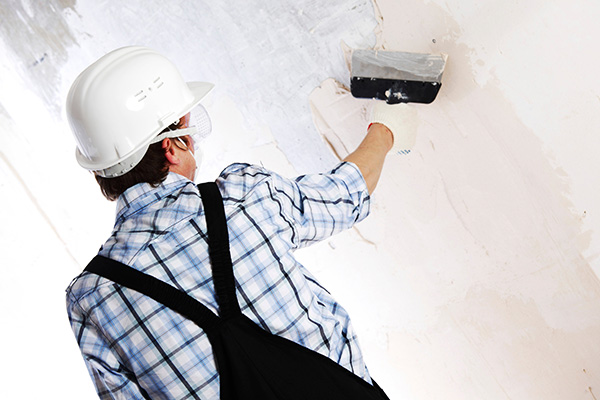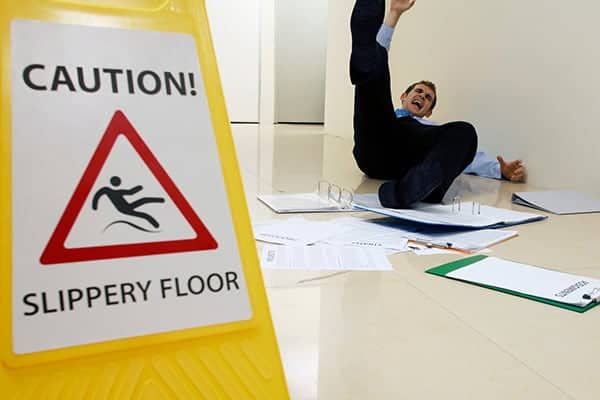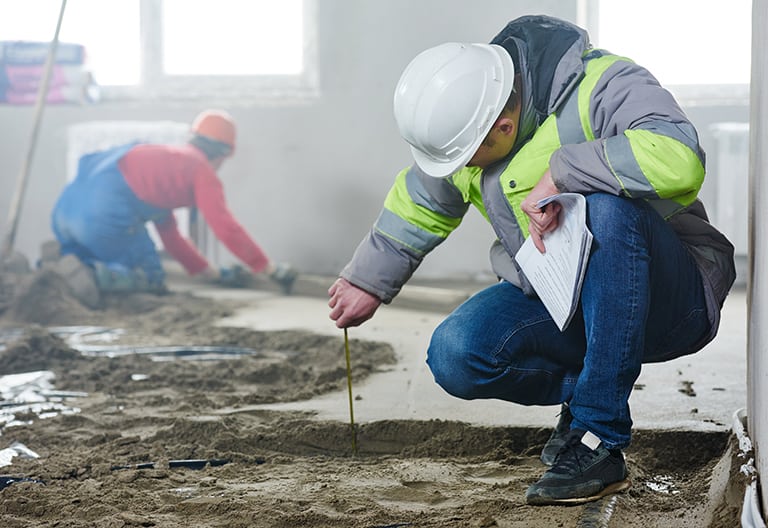
Top 10 safety tips for Plasterers
Posted on 14th September 2023 by Phil Ainley
Construction sites – large and small, commercial, or domestic – can be dangerous places, so it pays to take your time and consider how you can stay safe when undertaking your job.
Thankfully plastering is not classed as one of the riskier on-site professions, but there are elements of the job that require safety measures to be followed.
We took an in-depth look at the plastering trade to create our top 10 safety tips for plasterers.
1. Invest in regular staff training
Mitigating the risks of accidents begins with regular training. Making sure everyone in your team knows exactly what to do and how to do their jobs properly can significantly reduce the risk of accidents and accidental damage, whilst serving to improve work efficiency.
Even the most experienced people can benefit from updating their training, especially when it comes to changes in health and safety legislation.
Training can cover topics such as how to use equipment properly and safely, how to perform and document a risk assessment, first aider at work training, and the CITB’s health, safety, and environment tests (for operatives, managers, and specialists), to name but a few.
Other plastering training courses includes:
- Introductory plastering
- Advanced plastering
- Accredited plastering
- City & Guilds plastering
- NVQ Level 2 plastering
- Level 2 plastering diploma/ NVQ
- Work-based plastering courses.
2. Ensure all your staff have a Construction Skills Certification Scheme (CSCS) card
It is a legal requirement for plasterers to hold a CSCS card to work on-site. For this, the individual must pass the relevant CITB health, safety and environment test.
The appropriate test will depend on the individual and their qualifications. It is important to sit the correct test, as sitting the wrong test could delay their application for a CSCS card.
There are three types of test, which are for:
- Operatives – The operatives test covers basic health and safety and environmental awareness. This test is required for those people applying for the Labourer card, the Trainee card, the Apprentice card, most Blue Skilled Worker cards, and for most Gold Advanced Craft cards.
- Managers and Professionals (MAP) – Introduced in June 2023, the MAP test covers everything in the Operatives test, plus extra learning relevant to managers. This test is required for those applying for the Black Manager’s card and for the Academically or Professionally Qualified person cards.
- Specialists – This test covers everything in the Operatives test, plus extra learning relevant to specialist areas such as working at heights. The Specialist test is required for individuals applying for the Gold Supervisor card, as well as for the Blue Skilled Worker and Gold Advanced Craft cards in certain occupations.
There are some alternatives to the three health, safety and environment tests.
3. Use good quality Personal Protective Equipment (PPE)
Protecting yourself and your staff from hazards when working on site is vital. If you are the employer, and your risk assessment states that PPD is required for a job, then it is your responsibility to provide the PPE for your staff.
Plasterers are required to wear PPE, which typically includes as a minimum: odour masks, ladder safe shoes, and protective eyewear.
In some cases, refusal to wear PPE can result in disciplinary action. However, someone can refuse to wear PPE if it puts their safety at risk, for example, if the PPE does not fit properly.
As an employer, it is important that you ensure your staff are kitted-out properly with good fitting PPE, because it can safeguard them from accidents whilst safeguarding your business from an insurance claim.
4. Conduct risk assessments before starting any work each day
Managing risks and performing risk assessments for every day on every job is crucial to ensuring the safety of your team and members of the public, such as your client or passersby.
Conduct a full assessment before you begin the job, then top-up with a mini assessment each morning and afternoon (at least) after that. Ensure you take notes as part of your work log for the job. These will not only serve as learning prompts for future jobs but could also be required if an accident occurs.
The Health and Safety Executive (HSE) have risk assessment templates and examples available to download from their website.
5. Ensure stability when working at height
Falling from height and suffering an injury is a common accident risk on construction sites. Plasterers regularly work at height when skimming high walls and ceilings, so they are at increased risk of a fall injury.
Before climbing a ladder, it is important to assess the risks and make sure co-workers are aware that someone is working at height. Other risks to be aware of include overhead electric cables, ensuring the ladder has a stable base and is secure, and only allowing trained individuals to work from platforms.
When working up a ladder or on a platform it is important not to overstretch, but instead to come down from the ladder or platform and reposition it to reduce the risk of falling.
6. Follow health and safety protocols
Following health and safety guidance and legislation is important. It can help you to mitigate the potential risks of your job, such as accidents, accidental damage, and of course insurance being made claims against you.
For example, only allowing authorised, trained people to use drills, heat strippers and other dangerous tools not only means you will be working within the law, but also helps to ensure safety and to ensure that the job is done properly.
The Construction Industry Training Board published a downloadable guide that covers Health and Safety Advice for Plasterers.
7. Work tidily to minimise risk
Following on from conducting risk assessments, working tidily is arguably the best way to ensure safety and efficiency.
8. Take a break
Tiredness can lead to mistakes, which in-turn can lead to accidents, injuries, and accidental damage to a client’s property.
Manual work can be extremely tiring, so it is important to look after your personal welfare, and in-turn to look after the safety of your colleagues and take a break.
9. Protect your team
As the company owner, you have ensured your team are trained and they all have their relevant CSCS cards, now it is time to ensure they are covered if they have an accident.
If you employ staff, you must, by law, carry employers’ liability insurance, with a minimum of £5million of cover. This type of cover will insure your staff – and even your former employees – in the event they pick up an injury or illness in the course of their work.
Personal accident insurance is another form of cover that can offer cover in the event of an accident. The policy can give freelance contractors peace of mind that they are insured if they have an accident that stops them from working, by providing a benefit to cover loss of earnings.
10. Protect your customers
Plasterers are typically in close contact with members of the public. As such, it is important to have public liability insurance in place for peace of mind in the event of an accident that causes and injury or property damage.
Caunce O’Hara offer three levels of trades public liability cover – £1million, £2million, and £5million, depending on your requirements.
Click here today to get a quick online quote.
Sources:
https://drywalltoolsdirect.co.uk/blog/health-safety-when-plastering
https://drywalltoolsdirect.co.uk/blog/health-safety-top-tips-for-plasterers
https://www.gypsumtools.com/blog/plastering-health-safety-tips-for-work-on-site/
https://www.markeluk.com/articles/risks-plasterers-need-to-be-aware-of-and-how-to-safeguard-against-them
https://www.cscs.uk.com/applying-for-cards/health-and-safety-test/
https://www.hse.gov.uk/simple-health-safety/risk/risk-assessment-template-and-examples.htm
Useful Links

Public Liability Insurance
Protects against claims of injury to third-parties or damage to a third-party's property.

Employers' Liability Insurance
A legal requirement for anyone employing staff. Protects your business in-case an employee is injured at work.

Personal Accident Insurance
Cover for work injuries, illnesses caused by work and compensation awards.

